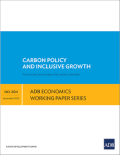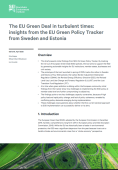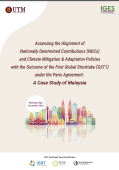
The design and implementation of green growth policies must rest on solid, evidence-based foundations. Communicating the need for policies while assessing their achievements requires proper monitoring of the underlying developments, progress and potential for both opportunities and risks.
Although indicators that measure either social or economic or environmental performance are broadly available, the transition to a green economy is a complex enough issue that as yet there is neither a consensus on an analytical framework nor a set of indicators with which to measure green growth. There are ongoing efforts from teams of experts to assess existing stock of green growth metrics (GGKP, 2013 and GGKP, 2016), and to establish a global framework for SDG indicators (IAEG-SDGs). Putting indicators to use encourages evidence-based decision making and is crucial for mainstreaming the green growth agenda in policymaking.
Relevance to the SDGs
Sustainable Development Goal (SDG) 17 calls for a global partnership towards sustainable development by strengthening the means of implementation. Target 17.18 recognizes the need for increased data availability from developing countries and 17.19 emphasizes the importance of monitoring progress.
Explore green growth resources related to SDG 17:
Indicators are commonly used to provide evidence of progress on sustainability objectives and for reporting purposes in the finance sector. Measurement enables assessment of the degree to which financial institutions are adopting practices that impact sustainability, for example the Sustainable Development Goals or alignment with the Paris Climate Agreement.
There is currently no systematic methodology for assessing progress on greening within the financial system. The Task Force on Climate-related Financial Disclosures (TCFD) has suggested that companies should develop scenario analysis to assess the resilience of their business model to a number of possible climate scenarios, while the EU is developing a taxonomy to standardize definitions of green. The main tool for measurement so far has been through the implementation of environmental, social and governance (ESG) criteria.
ESG data is gathered through (mostly voluntary) disclosure initiatives, either directly from companies or by using publicly available information. ESG data spans a wide range of issues, including measures of corporate carbon emissions, labor and human rights policies, and corporate governance structure. Some financial institutions use this data in a granular way to inform their capital allocation procedures, for example by assessing the long-term financial impact of a particular ESG policy or by allocating a risk metric to a high-emitting company, whereas others rely on a broad ESG score which combines multiple factors to give an overall assessment of ESG management.














